The Planets and Space Exploration
The four rocky planets
at the center of the solar system
Mercury,
Venus,
Earth,
Mars, are known as the inner planets.
Jupiter,
Saturn,
Uranus, and
Neptune are all composed primarily of gas and are
known as the outer planets.
There are thousands of smaller, icy not-quite-planets in the space beyond Neptune. They include the dwarf planets Pluto, Haumea, Eris, and Makemake.
The asteroid belt, between Mars and Jupiter, is made of thousands
of chunks of rock which travel around the Sun. The largest asteroid, Ceres, is also a dwarf planet. Comets are small icy bodies that travel past the Sun and give off gas and dust each time they pass by.
Unmanned spacecraft
have travelled to all the planets in the solar system (except Pluto) and
taken pictures of the planets and many of their moons. They have also
taken measurements that tell us what the planets are like inside.
 Big, Bigger, Biggest
Big, Bigger, Biggest
 A Solar System Model Builders Guide
A Solar System Model Builders Guide
You might also be interested in:
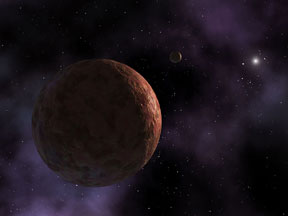
The outer edge of our Solar System is not empty. There are many huge spheres of rock and ice out near Pluto's orbit and beyond. Astronomers have a name for everything further out than the planet Neptune.
...more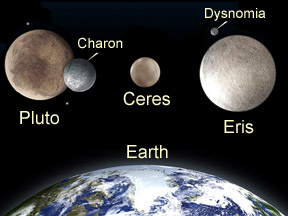
In 2006 the International Astronomical Union (IAU) approved a new classification scheme for planets and smaller objects in our Solar System. Their scheme includes three classes of objects: "small solar
...more
Pluto is a frigid ball of ice and rock that orbits far from the Sun on the frozen fringes of our Solar System. Considered a planet, though a rather odd one, from its discovery in 1930 until 2006, it was
...more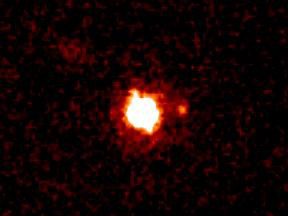
Eris is a dwarf planet in our Solar System. Eris was one of the first three objects classified as a dwarf planet, along with Pluto and Ceres. Eris was first spotted in January 2005. Eris is a large sphere
...more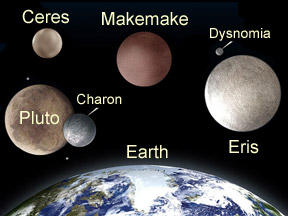
Makemake is a dwarf planet in our Solar System. Makemake was discovered in March 2005 by a team of astronomers led by Mike Brown. Makemake officially became a dwarf planet in July 2008. There were three
...more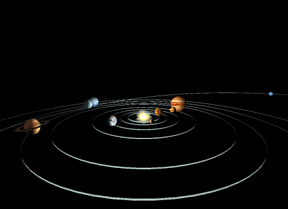
The solar system is made up of the Sun, the // Call the planets count function defined in the document head print_planet_count('planets'); planets and // Call the planets count function defined in the
...more
Scientists believe that the solar system was formed when a cloud of gas and dust in space was disturbed, maybe by the explosion of a nearby star (called a supernova). This explosion made waves in space
...more














